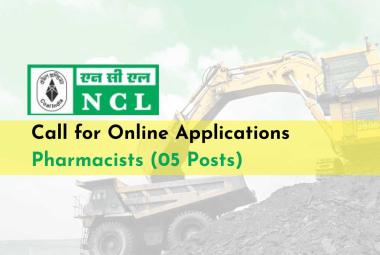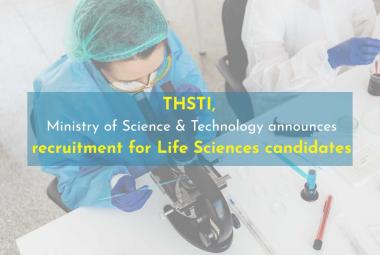SUBMIT YOUR ARTICLE/PROJECT/SHORT COMMUNICATION ALONG WITH YOUR SCAN PHOTOGRAPH AND COPYRIGHT FORM AT editor-in-chief@pharmatutor.org
The PharmaTutor Magazine (ISSN: 2347 - 7881) is a monthly published online magazine, which publishes innovative research papers, reviews, mini-reviews, short communications and notes dealing with Pharmaceutical Sciences & Lifesciences (Pharmaceutical Technology, Pharmaceutics, Biopharmaceutics, Pharmacokinetics, Pharmaceutical/Medicinal Chemistry, Computational Chemistry and Molecular Drug Design, Pharmacognosy and Phytochemistry, Pharmacology & toxicology, Pharmaceutical Analysis, Pharmacy Practice, Clinical and Hospital Pharmacy, Cell Biology, Genomics and Proteomics, Pharmacogenomics, Bioinformatics, Biotechnology, Biochemistry, zoology, Microbiology). All manuscripts are subject to rapid peer review. Those of high quality (not previously published and not under consideration for publication in another journal) will be published without delay.
Manuscript Format
The preferred format of all manuscript is MS Word. Illustrations (figures) and images must be inserted in the manuscript at the position they should appear when published.
Preparation of Manuscript
Mode of Presenting Paper is English. Each manuscript should be typed single-spaced on A4 (8.5" × 11") paper size with 1 inch margins. It should be arranged in the following order: About authors, Title, Abstract, Keywords, Introduction, Materials and Methods, Results, Discussion, Conclusion, Acknowledgement and References, table & figures (wherever require).
Title Page
Title page should contain title of the paper in bold face, title case (font size 14), names of the authors in normal face, upper case (font size 12) followed by the address in normal face lower case. The author to whom all correspondence be addressed should be denoted by an asterisk mark. The title should be as short as possible and precisely indicate the nature of the work in the communication. Names of the authors should appear as initials followed by surnames. At the bottom left corner of the title page, please mention “*Address For correspondence” and provide a functional e-mail address. Address of the corresponding author to whom all correspondence may be sent should be given only if it is different from the address already given under authors' names.
Abstract
Should start on a new page after the title page and should be typed in single-space to distinguish it from the Introduction. Abstracts should briefly reflect all aspects of the study, as most databases list mainly abstracts.
Authors must supply an abstract on the Article Title Page containing the followings:
- Purpose (mandatory)
- Design/methodology/approach (mandatory)
- Findings (mandatory)
- Research limitations/implications (if applicable)
- Practical implications (if applicable)
- Social implications (if applicable)
Keywords
Provide six to seven appropriate key words after abstract
Introduction
A short introduction of the research problem followed by a brief review of literature and objective of the research.
Materials and Methods
Describe the materials used in the experiment, year of experimentation, site etc. Describe the methods implied for collection of data in short.
Results and Discussion
This segment should focus on the fulfilment of stated objectives as given in the introduction. It should contain the findings presented in the form of tables, figures and photographs.
Conclusion
In a separate section, the major findings of the study and their usefulness shall be summarized. This paragraph should address the hypothesis or purpose stated earlier in the paper.
References
References to other publications should be in Harvard style and carefully checked for completeness, accuracy and consistency. This is very important in an electronic environment because it enables your readers to exploit the Reference Linking facility on the database and link back to the works you have cited through CrossRef.
You should cite publications in the text: (Adams, 2006) using the first named author's name or (Adams and Brown, 2006) citing both names of two, or (Adams et al., 2006), when there are three or more authors. At the end of the paper a reference list in alphabetical order should be supplied, numeric referencing list {example [1], [2] } should not be submitted for evaluation:
Journal Articles
Surname, Initials (year); "Title of article"; Journal Name; volume(number); pages.
Eg., Eichler H.G., Ramies H., Bauer K., Korn A., Bacher S. and Gasic S (1986); "Survival of gentamicin loaded carrier erythrocytes in healthy human volunteers"; Eur. J. Clin. Invest; 16(1); 39-42
A Book
Surname, Initials (year), Title of Book, Publisher, Place of publication.
e.g. Das, PC (1989); Text Book of Medicine; Current Distributors; Delhi
A Chapter in a Book
For book chapters Surname, Initials (year), "Chapter title", Editor's Surname, Initials, Title of Book, Publisher, Place of publication, pages.
e.g. Calabrese, F.A. (2005), "The early pathways: theory to practice – a continuum", in Stankosky, M. (Ed.), Creating the Discipline of Knowledge Management, Elsevier, New York, NY, pp. 15-20.
For published conference proceedings
Surname, Initials (year of publication), "Title of paper", in Surname, Initials (Ed.), Title of published proceeding which may include place and date(s) held, Publisher, Place of publication, Page numbers.
e.g. Jakkilinki, R., Georgievski, M. and Sharda, N. (2007), "Connecting destinations with an ontology-based e-tourism planner", in Information and communication technologies in tourism 2007 proceedings of the international conference in Ljubljana, Slovenia, 2007, Springer-Verlag, Vienna, pp. 12-32.
For unpublished conference proceedings
Surname, Initials (year), "Title of paper", paper presented at Name of Conference, date of conference, place of conference, available at: URL if freely available on the internet (accessed date).
e.g. Aumueller, D. (2005), "Semantic authoring and retrieval within a wiki", paper presented at the European Semantic Web Conference (ESWC), 29 May-1 June, Heraklion, Crete, available at: https://dbs.uni-leipzig.de/file/aumueller05wiksar.pdf (accessed 20 February 2007).
For working papers
Surname, Initials (year), "Title of article", working paper [number if available], Institution or organization, Place of organization, date.
Eg. Moizer, P. (2003), "How published academic research can inform policy decisions: the case of mandatory rotation of audit appointments", working paper, Leeds University Business School, University of Leeds, Leeds, 28 March.
For encyclopedia entries (with no author or editor)
Title of Encyclopedia (year) "Title of entry", volume, edition, Title of Encyclopedia, Publisher, Place of publication, pages.
Eg. Encyclopaedia Britannica (1926) "Psychology of culture contact", Vol. 1, 13th ed., Encyclopaedia Britannica, London and New York, NY, pp. 765-71.
(For authored entries please refer to book chapter guidelines above)
For newspaper articles (authored)
Surname, Initials (year), "Article title", Newspaper, date, pages.
Eg. Smith, A. (2008), "Money for old rope", Daily News, 21 January, pp. 1, 3-4.
For newspaper articles (non-authored)
Newspaper (year), "Article title", date, pages.
E.g. Daily News (2008), "Small change", 2 February, p. 7.
For electronic sources
If available online, the full URL should be supplied at the end of the reference, as well as a date that the resource was accessed.
Eg. Castle, B. (2005), "Introduction to web services for remote portlets", available at: https://www-128.ibm.com/developerworks/library/ws-wsrp/ (accessed 12 November 2007).
Standalone URLs, i.e. without an author or date, should be included either within parentheses within the main text, or preferably set as a note (roman numeral within square brackets within text followed by the full URL address at the end of the paper).
Illustrations
All the tables and figures should be in the text at suitable place. Only MS word table format should be used for preparing tables. Tables should show lines separating rows but not those separating columns. Tables should be numbered consecutively in Arabic numerals and bear a brief title in capital letters normal face. Tables should not be very large that they run more than one A4 sized page.
Abbreviations, Units Etc
The journal strictly follows the rules defined in the IUPAC Manual of symbols and terminology for physicochemical quantities and units.
Short Communication
The journal publishes exciting findings, preliminary data or studies that did not yield enough information to make a full paper as short communications. These have the same format requirements as full papers but are only up to 10 pages in length in total. Short Communications should not have subtitles such as Introduction, Materials and Methods, Results and Discussion- all these have to be merged into the running text. Short Communications preferably should have only 3-4 illustrations.
Review Article
Should be about 10-15 pages long, contain up-to-date information, comprehensively cover relevant literature and preferably be written by scientists who have in-depth knowledge on the topic. All format requirements are same as those applicable to full papers.
Submission of Manuscript
All manuscripts (must be in English and in MS Word format) and should be submitted via our online system or through e-mail at editor-in-chief@pharmatutor.org as an attachment for quick evaluation.
Copyright and Permission
Submission is a representation that the manuscript has not been published previously and is not under consideration for publication elsewhere. Authors would be required to sign a form (to be supplied by the Editor) transferring copyright before the manuscript can be published.
<<< DOWNLOAD COPYRIGHT FORM >>>
Ethical matter
Authors publishing results from in vivo experiments involving animals or humans should state whether due permission for conduction of these experiments was obtained, from the relevant ethics committees, in the Materials and Methods section. In addition, authors wishing to publish research work involving human studies should also send a notary verified letter of approval from the Ethics Committee or the Institutional Review Board.
Authors are requested to send their research articles strictly according to the given format mentioned in the guidelines to the authors













